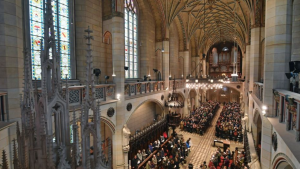
It’s easy to preach about the Reformation.
It’s never too late, because the people and the principles from the Reformation will help your church members grow up in their faith. They’ll get sound theology and world-view from the stories you’ll tell and the Scripture you’ll teach.
Here’s how I preached it last weekend. Read on to pick up an idea or two, then feel free to use this message, making it your own.
Reformation Sunday
Good morning/evening, everybody.
Now is the time in our service when we receive the offering. I want to announce a special opportunity available in this offering only: anyone who contributes $5,000 today can guarantee your salvation and home in heaven, and, for every additional $5,000 you donate, you can buy a relative’s way out of hell too.
Does that sound farfetched? Outrageous? Unbiblical?
That’s what was happening in churches in Germany 500 years ago. The Pope was raising money to build St. Peter’s Cathedral, and the incentive to contribute was that for every $5,000 you gave, you could buy someone’s way out of purgatory.
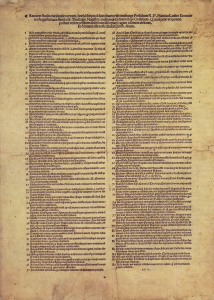
Which is why, 500 years ago, a monk named Martin Luther nailed a list of objections to the door of his church in Wittenberg, Germany.
That list sparked the greatest revival in Christian history.
The list was written in Latin. The monk was a professor of theology. His formal title was The Reverend Doctor Father Martin Luther.
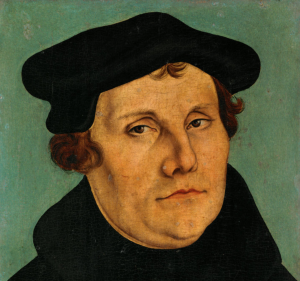
Dr. Luther was writing his list, which he called, “The 95 Theses” to scholars. But God had something else in mind. When some enterprising commoner pulled this list off the door, translated it into German, and circulated all over the country, ordinary people read it and agreed with Luther.
Shortly thereafter, Luther’s list was translated into French. And then English, Dutch, Swedish, Czech, and dozens of other European languages. People who read it found they agreed with this professor of theology. They started protesting against the Pope. Loyal Catholics labeled them, “Protestants.” And thus was born the Protestant Reformation.
Why it’s Important to You
Someone once said that “Those who fail to learn from history are doomed to repeat it.”
So this morning, I want to teach you some history, which will help you to understand how we got to where we are today. So, are you ready to do a little learning today?
I have a simple outline.
- First, I want to tell you the stories of five people who helped shaped the Reformation,
- Then, I want to tell you the five principles that shaped the Reformation.
The Stories of Five Reformers
The first person is none other than Luther himself. Luther was such a giant of the faith that I’m actually leading a tour of his life next June. I encourage all of you who are looking for a vacation with spiritual depth to consider coming with me.
Martin Luther
Little Martin was born in 1483, in a little town called Eisleben.
Anybody know what year Columbus sail the ocean blue? (1492) So 9 years before the discovery of America, Luther was born.
Luther was the son of a miner. His dad’s dream was that Martin would become a lawyer. So Luther dutifully studied in grade school, went to college and law school, and on his way home from school one day, he got caught in a thunderstorm.
When lighting struck so close to him that he fell off his horse, Luther prayed, “St. Anne, if you’ll deliver me from this, I’ll become a monk!”
St. Anne was the patron saint of miners. The Catholic church was teaching that you couldn’t approach God directly, you had to go through a saint or holy person who would pray on your behalf. So Luther prayed to the patron saint of miners.
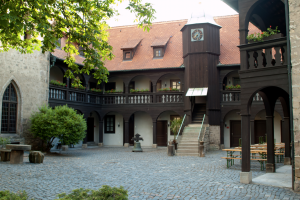
When the storm was over, Luther pulled himself off of the ground, dried himself off, and enlisted in the monastery at Erfurt.
Luther studied at the monastery. In his own words, “Excelling at monkary.”
Luther learned so much that in 1508, was assigned to teach and preach in the city of Wittenberg. He was still there 11 years later, when the Pope began offering “get out of spiritual jail-free” cards. At which point, Martin wrote the 95 Theses that sparked the Reformation.
It took the Pope awhile to respond to Luther’s Theses. When he did, 3 years later, he excommunicated Martin from the Roman Catholic Church. From that time, until the end of his life in 1546, Luther lived under a death sentence from the Church of Rome.
To preserve his life, Prince Frederick, a powerful friend, kidnapped Luther and hid him in Wartburg Castle. And yes, we’ll be visiting there too.
At Wartburg, Luther translated the NT into German under the pseudonym, “Junker Jorg.” For a thousand years, Europe’s only Bible translation was the Latin Vulgate. Only scholars read Latin, so only scholars could read the Bible.
Luther’s NT was the first Bible translation into spoken European language. Imagine, opening the Bible for the very first time in a language you could understand? That’s what happened all over Germany.
A side effect of Luther’s Bible was a unification of the German language. In the early 1520’s, Germany was more of a patchwork of tribes than a nation. Each of them had their own unique German dialect. But when Luther translated the Scriptures into his native Saxon German, within just a few years so many people were reading it that Saxon-German became the national German language.
Zerr gutt? Huh?
For note-taking purposes, the key date for Luther is:
Martin Luther – 1517 – Wittenberg – Lutherans
1517, because that’s the year he nailed his 95 Theses to the Wittenberg door. The movement he started became known as the Lutheran Church, and his followers are called “Lutherans.”
Well God was up to something because not only was Germany being transformed, but fast forward just 2 years, and a second great reformer came on the scene.
You’ve all heard of Martin Luther, right?
Well, you probably haven’t heard of this second guy. But he was equally smart and bold and anointed by God. His name is Ulrich Zwingli. Everybody say Ulrich. Now say Zwingli.
Ulrich Zwingli
Zwingli was a Swiss priest who one day decided to teach himself Greek so he could read the New Testament in its original language. From his reading, Ulrich discovered much of what the church was doing was not only not in Scripture, but counter to the teachings of Scripture.
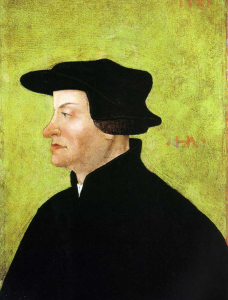
One of those things that was not in Scripture was the idea that priests needed to be single. St. Peter himself had a wife, so why couldn’t other men of the cloth marry?
In Zwingli’s day, many priests had mistresses. A few Popes had multiple mistresses. To Ulrich, this was all wrong. So in 1522, instead of taking a mistress, Zwingli took a wife. He married Anna Reinhart. As far as we know, he was the first Catholic priest to marry in a millennium. Ulrich and Anna had two sons and two daughters.
Not to be outdone, three years later Luther married Katherine Von Bora. Together they had 3 sons and 3 daughters – and adopted 4 other children as well.
If Ulrich’s marriage wasn’t groundbreaking enough, the Catholic Church had a long-established practice of fasting during the weeks leading up to Easter. Zwingli couldn’t find the idea of fasting for Lent in the Bible, so he defiantly consumed a sausage in a public square to the gasps and admiration of the crowd that gathered.
In Germany, the Reformation was launched by a paper. In Switzerland, it was launched by a sausage.
Personally, if I was going to defy the Catholic Church, I’d do it with steak. But Ulrich was Swiss, and the Swiss love their schnitzel.
Ulrich Zwingli – 1525 – Zurich – Anabaptists
A key date for Zwingli was 1525, which is when he went before the Zurich City Council and persuaded them to let him teach the Bible in church.
In the centuries leading up to that moment, the Catholic Church had celebrated Mass in church, not Bible exposition. Mass, the Catholics believed, was a means of generating grace. Because during the Mass, the priest transformed the bread and wine into the actual body and blood of Jesus, which was then consumed as a fresh sacrifice by all participating in it that day.
Bible Teaching
Zwingli taught the Bible in church, which electrified the city of Zurich. One congregant effused, “When Zwingli teaches from the Bible, it is so exciting the hair on the back of my head stand up!” (I’m sure that happens for all of you every time I teach the Bible too.)
Baptism
Zwingli’s personal reading of the Bible also showed him that no babies were ever baptized in the Bible. Everyone who was baptized was baptized, not before, but after they had made a personal profession of faith in Christ.
So Zwingli and the elders of Zurich abolished the practice of infant baptism and re-baptized everyone who came to faith in Christ. He and his followers were therefore labeled, “Anabaptists” which means, “re-baptizers.” In that way, he’s sort of the father of the Baptist movement, but not quite. Baptists don’t come directly from the Anabaptists, but are related.
A third figure in the Reformation was Menno Simons.
Menno Simons
Simons was born in “The Lowlands,” which we call “Holland,” or “The Netherlands” today.
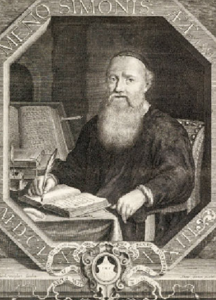
Menno was ordained in 1524 and spent the first two years of his priesthood performing his religious duties by day, and drinking and gambling in bars by night.
One day, to impress his fellow priests, he decided to do something that very few of them were doing in that day: he decided to read the Bible for himself.
1526 is the key date for Menno, because that’s when he opened the Scriptures for the first time.
Menno Simons – 1526 – Holland – Mennonites
Simons couldn’t escape what he read in Scripture. And to his surprise, he became a believer in Jesus Christ.
This conversion experience caused him to leave the priesthood and join the Anabaptist Movement. Simons preached and taught far and wide. His teachings brought two beliefs to the Protestant Movement that have stayed with us to this day.
Baptism
The first was the conviction that the church should only baptize believers.
- Not babies.
- Not family members of believers. Believers. Only believers get baptized, because the purpose of baptism is to demonstrate that you are a follower of Jesus Christ.
Simons’ study of the Bible showed him that two things happen in the lives of every sincere Christ follower. First they believe, then they are baptized. Whenever someone in the New Testament asked “What must I do to be saved?” the answer was always “believe and be baptized.” Never “be baptized and then believe.”
Separation of Church and State
The second conviction Menno Simons brought to the Protestant church was that no government should enforce religious beliefs.
During the previous 1,000 years, religion and the state were pretty much inseparable throughout Europe. Whoever was in power got to choose the religious practices for all of his subjects.
If that wasn’t bad enough, to increase their wealth, princes and other wealthy aristocrats often bought bishoprics in order to get their hands on the money generated in the churches.
Luther’s bishop, Albert of Mainz, was both a prince and a bishop and eventually bought a second bishopric. He was like a fast food franchise owner: if one location generates money, let buy a second one, and then a third!
Menno Simons taught that the church and the state ought to be separate – a principle the Puritans packed with them when they set sail on the Mayflower.
Menno Simons was such a personable guy that his followers weren’t called “Simonites,” but “Mennonites,” after his first name.
Think you can handle a fourth reformer? This one’s name was John Calvin.
John Calvin
Calvin was a French lawyer who moved to Switzerland and was recruited to become the preacher for the largest church in Geneva. Zwingli preached in German-speaking Switzerland. Calvin preached in the French-speaking part.
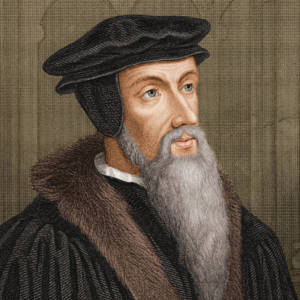
John Calvin had one of the keenest minds of all times.
At age 27, he published an organized description of Christian theology called The Institutes of the Christians Religion. Calvin continued to add to this work throughout his life. Today, when theologians purchase a copy Calvin’s Institutes it takes up more shelf space than the Encyclopedia Britannica.
The key date for Calvin is…
John Calvin -1534 – Geneva – Presbyterians
That’s the year he was recruited to preach in Geneva. Calvin is the father of all Calvinistic denominations, including the Presbyterians, the Reformed Church, the Dutch Reformed Church, and a whole lot of others.
The fifth figure in the Reformation is an Englishman you’ve all heard of named “Henry the 8th.”
Henry the 8th
Henry became king of England at age 17. At age 18, he married Catherine of Aragorn. Of the six children Catherine conceived, only one survived infancy: a daughter named Mary. Henry desperately wanted a son ensure that the Tudor line would continue. And the older Catherine got, the worrieder Henry became. When Catherine turned 40, Henry decided that enough was enough, and he asked the Pope to annul their 24-year marriage.
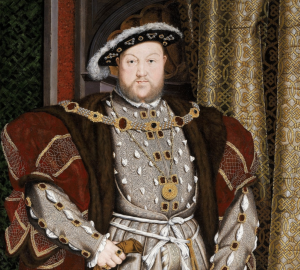
Well, Catherine’s nephew was Charles V, King of Spain. Spain was more powerful than England, so the Pope turned down the request.
On an interesting side note, John Colet was dean of St. Paul’s Church in London, and Colet had already been calling for reform of the clergy and other changes that were happening on the Continent, so Henry looked around and said, “Why not take the English church out of the Catholic faith, like everybody else is doing?”
Henry VIII -1534 – England – Anglicans
So he did. In 1534, Henry declared himself head of the English church by a law called The Act of Supremacy. The English church today is called the “Anglican” church. The American version is called the “Episcopal Church.”
Theology
If you can construct a map of Europe in your head, you’ll see that in less than 20 years, from 1517 to 1534, people and churches in every nation of Europe were transformed. Which is what makes the Reformation the most significant movement in Christian history since the Cross itself.
Which raises the question…
what was the Reformation all about?
What could matter so much that farmers and blacksmiths, housewives and children all over Europe exit en masse, from the Catholic Church and express faith in Christ and Christ alone?
In one word, the answer is: theology.
In an age of tolerance and political correctness, it’s hard to believe that people would give their lives for subtle differences in what they believed about God. But Luther’s list, nailed to a wooden door, reminded people that what you believe about God really does matter.
Oh that someone would nail another list to a door today!!!
Because, friends, what you believe about God shapes everything about you.
- What you believe about God causes you to understand (or misunderstand) the purpose of life, and the purpose of YOUR life.
- What you believe about God will determine whether you will hope or despair when challenges come your way.
- What you believe about God will determine how you treat people.
- It will determine your work ethic.
- It will determine your priorities, and your values.
- And ultimately, it will determine your destiny.
What the Reformers discovered by reading their Bibles changed Europe, and shaped the founding of our country a century later.
So what did the Reformers discover by reading their Bibles?
Five things. Five statements. What the Reformers discovered is what we today call the FIVE SOLAS.
The Five Solas are short theological statements have shaped the heart of every true believer for 500 years now.
Any body know what “Sola” in Latin means? It means “alone,” or “only.”
Let me walk you through these:
The Truth of the Five Solas
The first of the Solas is…
1. Sola Scriptura = Scripture over tradition.
And what that means is, out of all the possible truth-sources in the world, the only, only, only one that Christians are going to fully rely on is… Scripture.
For centuries, the RCC church taught that there were two sources of truth. One was the Bible and the other was the Pope and his councils. Luther and friends said, “No. The Pope is not infallible. And even the most learned conclave of Cardinals can get things wrong once in a while. The only pure and reliable source of truth is Scripture alone.
The Bible says:
“All Scripture is God-breathed (literally, exhaled by God into the minds of the Scripture writers) and is useful for teaching, rebuking, correcting and training in righteousness…” – 2 Timothy 3:16-17
Translated, “You can steer your life by this Book:
- It was teach you the right path to walk on.
- It will let you know when you’ve gotten off the path.
- It will tell you how to get back on the path.
- And it will train you to stay on the right path once you get back on it again.”
At the top of your message notes I printed this verse:
“Every word of God is flawless.” – Proverbs 30:5
The Pope was teaching that during our lifetimes, we store up good works (called “merits”) and we store up against us bad works (called “demerits”). The Church was teaching that those who trust in Christ will eventually get into heaven, but if their merits don’t outweigh their demerits, then they need to spend some time purging their souls of the demerits they’ve accumulated, so our souls are taken to a place of purging called “purgatory.”
Luther, who earned a doctrine in biblical studies said, “You can read the Bible from cover to cover and you will never find evidence that God purges us before admitting us into heaven. In fact, the Bible teaches that, for the believer, to be absent from the body is to be present with the Lord.”
The Church countered with, “But the Pope says there’s a purgatory.”
And the Reformers said, “It doesn’t matter what the Pope says. It matters what Scripture says: Sola Scripture. Scripture alone is our source for all truth.”
Jesus Himself felt so strongly about this that He said, right out loud to Satan one day:
Jesus answered, “It is written: ‘Man shall not live on bread alone, but on every word that comes from the mouth of God.’” – Matthew 4:4
“The word of God alone.” Scripture alone. Sola Scriptura.
The second sola is called…
2. Sola Fide = Faith over works.
Which means “Faith alone.”
The RCC was teaching that there were two things necessary for salvation. One was faith in Christ, the other was good works. The Reformers said, “Nope… Sola Fide. Only faith in Christ saves you. Once you’re saved by faith, you’ll want to do good works. But those good works won’t save you. They’ll only prove that you are saved.”
Luther was reading the book of Romans one day when he came across Romans 1:17. It says…
For in the gospel the righteousness of God is revealed—a righteousness that is by faith from first to last, just as it is written: “The righteous will live by faith.” – Romans 1:17
He flipped over a few pages and found this in Romans 4:
“Now to the one who works, wages are not credited as a gift but as an obligation. However, to the one who does not work but trusts God who justifies the ungodly, their faith is credited as righteousness.” – Romans 4:4-5
Faith alone. Not “faith and works,” but “faith over works.”
Luther’s favorite book was the book of Galatians. In chapter 2, Galatians says…
“… know that a person is not justified by the works of the law, but by faith in Jesus Christ. So we, too, have put our faith in Christ Jesus that we may be justified by faith in Christ…” – Galatians 2:16
Scripture tells us that we are saved by faith alone. Does that mean we don’t have to do anything?
The Reformers response to that was, “No. We don’t have to do anything, because God did everything. We are not saved by anything we have done or can do. We are saved by His grace alone.”
And the phrase of “Grace alone” is…
3. Sola Gratis = Grace over merit.
We are saved by expressing faith in God’s grace. Ephesians 2 tells us this when it says…
“For it is by grace you have been saved, through faith—and this is not from yourselves, it is the gift of God— not by works, so that no one can boast.” – Ephesians 2:8-9
Titus 3:5 says..
“… he saved us, not because of righteous things we had done, but because of his mercy. He saved us through the washing of rebirth and renewal by the Holy Spirit, whom he poured out on us generously through Jesus Christ our Savior…” – Titus 3:5-6
That’s grace! Nothing we deserved. Nothing we have earned. Sola gratia.
The fourth tenant of the Reformation is…
4. Solus Christus = Christ over priests.
What do you think that means? Christ alone. Christ over priests.
The Church was teaching that you needed a priest to bring you to God. They believed that in the mass, the priest turned bread and wine into the body and blood of Jesus, and that then by consuming those, we received some of the merits of Christ, which would help us get to heaven.
“No, no, no!” said the Reformers. Priests don’t get to come in between us and Christ. What He did, He did directly for us. Not indirectly.
I Timothy 2:5 says…
“There is one God and one mediator between God and mankind, the man Christ Jesus…” – 1 Timothy 2:5
This is why there is no altar rail in our church. The Catholic Church has a rail between us and the altar because only the priest can directly approach God. We have to get to God through the priest.
The Reformation taught us that WE are the priests. Look at this:
“But you are a chosen people, a royal priesthood, a holy nation, God’s special possession, that you may declare the praises of him who called you out of darkness into his wonderful light.” – 1 Peter 2:9
We are the priests. We get to do ministry directly with God and directly to God. It’s why, when we do baptisms, if there’s a person who has played a significant part in you’re coming to Christ, we encourage you to have that person do the baptism. Our pastors are here to help, because sometimes people get nervous and need help. But you are the priests!
Solus Christus. The only priest we need to bring us to the Father is the Son.
The fifth tenant the Reformers were willing to die for is called…
4. Soli Deo Gloria = Christ over Mary.
Do you know what that means? “For the glory of God alone.”
Johann Sebastian Bach was a follower of Luther. On the bottom of most of Bach’s compositions, he wrote “SDG.” – Soli Deo Gloria.
The Catholic Church had begun to worship Mary. Some call her “The Co-Redemptrix.”
The Reformers said, “No. We will not give glory to anyone but God alone.”
Romans 11 says…
“For from him and through him and for him are all things. To him be the glory forever! Amen.” – Romans 11:36
God made us for His glory. And when we live for His glory, we are living in line with our intended purpose.
1 Corinthians 10:31 says…
“…whatever you do, do it all for the glory of God.” – 1 Corinthians 10:31b
We exist to bring God glory.
When we bring God glory, we fulfill the purpose for which we were made.
Make it Personal
How do you bring God glory?
You put Him on display. You show people His greatness.
If Luther were here today, he would say,
- Parents, display God’s glory by showing your children how great He is, every day.
- Children, display God’s glory by honoring Him before your parents. Let them see God’s glory by being a wonderful child for them.
- Students, display God’s glory by studying diligently, honoring your teachers, being a friend to other students.
- Employees, display God’s glory by how you work. Work excellently, because God is excellent.
Friends, as much as I’m able, I want to give God glory with each day of my life. How about you?
This is the Reformation. And we are part of it.
We, the people of God live with Scripture as our only authority. We live by faith, trusting in God’s grace alone.
We live for Christ alone, by Christ alone, in Christ alone. And in everything we do, we do our best to put the greatness of God on display.
Amen? Amen!
What’s Next?
Further Reading:
- How to Make a Difference with your Life like Martin Luther
- A Pastor’s Guide to an Easy, Successful Israel Tour
- I Need Help to Preach Strategically
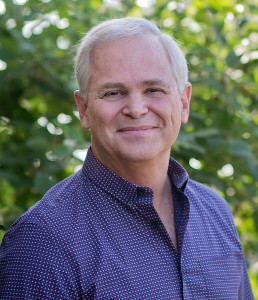 Hal Seed is the founding and Lead Pastor of New Song Community Church in Oceanside, CA. He mentors pastors who want to lead healthy, growing churches with resources at www.pastormentor.com.
Hal Seed is the founding and Lead Pastor of New Song Community Church in Oceanside, CA. He mentors pastors who want to lead healthy, growing churches with resources at www.pastormentor.com.
Start Here to learn more about the resources available for you at PastorMentor.
Leave a Reply